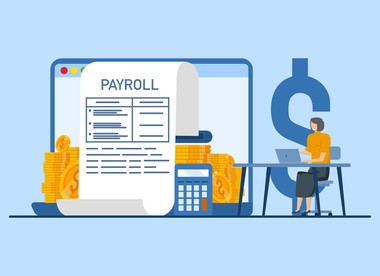Apr 08, 2024

Do you run a small business? Have you hired bookkeepers to manage your accounting and payroll processes?
The payroll process might seem like something you can manage manually. However, calculating wages, reporting taxes and paying attention to other payroll deductions are very time-consuming responsibilities. That’s why integrating payroll with the accounting department can simplify the entire payroll process for your business.
How can you eliminate challenges to payroll processing?
Let’s take a closer look at the ways you can make payroll easier for you and your business.
Pay attention to updates to laws and regulations
Stay in the know as laws and regulations change, whether they be federal, statewide or local. Double-check that your payroll processes — and any software that you use — are updated and compliant with any legal requirements. Also, regularly train your employees to ensure that everyone is on the same page.
Stay in compliance with laws and regulations
Maintain accurate records to ensure that you’re always in compliance with payroll-related laws. According to the Fair Labor Standards Act (FLSA), keeping payroll records is a mandated part of all businesses, and you are required to keep a copy of your payroll records for three years at a minimum. So, make sure you have plenty of storage space to adhere to the FLSA’s requirements.
Be mindful of the possibility of data breaches
Payroll processes deal with very sensitive information, including bank account numbers, Social Security numbers, home addresses and pay rates, among other private details. Unfortunately, data breaches are all too common, but thankfully, there are measures you can take to protect the information in your databases.
Make an effort to minimize the risk of company-related data breaches by establishing clear privacy policies, heightened security for payroll records, and internal controls relating to whom you permit to access pay-related information.
Look out for calculation errors
Be mindful of the fact that making calculation errors is human nature. However, such errors can complicate year-end accounting and W-2 form processing procedures.
Take strides to reduce the chance of errors that can cause issues in the following year. For instance, if you spot an erroneous payment, correct it immediately to avoid any financial distress for your team.
Avoid misclassifying employees
Employee misclassification is a major problem, but the good news is that it’s easily avoidable. If you employ a pool of both full- and part-time employees — as well as independent contractors — then you already understand the importance of properly categorizing each employee based on the type of employment they have with your company. Pay close attention to the classification that you apply to each person who works for you, especially when it comes to how you pay them and whether or not you withhold taxes from them.
Make updates to payroll as changes arise
Whenever changes take place, adjust payroll accordingly. For instance, if an employee moves to a different tax jurisdiction, you must update their address in your system. Then, calculate the withholding amounts in accordance with their new location. A payroll solution that includes employee self-service capabilities can work wonders.
Regularly check payroll data
Pay attention to the accuracy of your payroll data. Ensure that your employees are correctly reporting the hours they work. Make use of timesheet signoffs and expense audits to ensure accuracy. Also, when running payroll reports and analyzing data, keep an eye out for unusual trends and major outliers, as these details can help you identify issues promptly.
Learn how to incorporate technology into the workplace
Data integrity is crucial, and technology can help. By taking measures to integrate payroll with the other systems in your business, you can improve the workflow and accuracy of your company. Plus, cloud-based payroll assistance is easy to access, so seek out an appropriate option for your needs and subscribe for additional help.
Technology can make the payroll process so much easier, from knowing the exact amount of deductions to make to determining the dollar value of the taxes you owe. Technological advancements can even make unpaid leaves taken by employees easier to track.
But if you’re working with outdated versions of your software, you might find that it no longer suits the needs of your operations, resulting in greater harm than good.
As you change processes and policies, dispersed data might become difficult to manage. However, as long as you keep your software or payroll service provider aware of such changes, you can ensure that your systems can handle all of the payroll needs of your company.
©2024